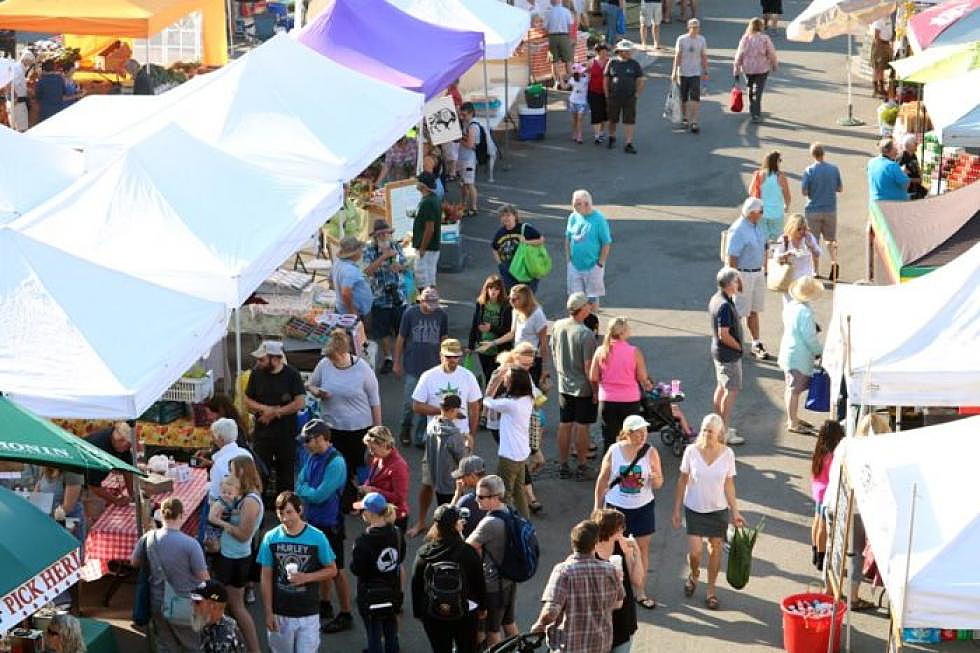
Eat local in August: Montana Local Food Challenge begins Tuesday
On her family farm in Rosebud County, about seven miles east of Forsyth, Jean Lemire Dahlman and her husband, Floyd, raise wheat and cattle.
They also have a big vegetable garden and a pond stocked with bass, and because they are hunters, they eat a lot of venison.
“I plan what we’re going to eat and I make it from scratch,” Jean Dahlman said. “We actually live off the land about as closely as anybody could in this region.”
That personal experience is the main reason she’s an enthusiastic supporter of the Montana Local Food Challenge, first launched a year ago by the Northern Plains Resource Council‘s Food and Agriculture Committee, which Dahlman chairs.
The second annual Local Food Challenge, which starts Tuesday morning and runs through the end of August, has a simple goal: to encourage people all over the state to eat something local every day.
To help people meet that goal, the food challenge website includes a map showing restaurants and stores all over the state that serve local food, links to a map of farmers’ markets statewide and a list of other local-food resources.
The map is especially useful. It shows where each provider of local food is, plus a list of communities with such providers. If you click on a city or town, that brings up a list of all such establishments, with an address, phone number and short description.
Bozeman leads the pack with 27 local-food providers, followed by Missoula, 22, and Billings with 14. If you click on “Otter,” a tiny community in southeastern Montana, you learn that there is one such provider, Lohof Meats, at 64 Boyce Road.
Last year, participants were asked to keep a daily log of their purchase and consumption of local foods. This year, in an attempt to simplify things, participants are merely encouraged to eat and buy locally, but once a week (for five weeks) they can also take part in a weekly challenge related to eating local.
The first “challenge” is to buy food directly from a farmer—for most people at a local farmers’ market. Participants will simply check a box and hit “Save progress.” Each time you meet a challenge your name will be entered in a drawing for a $100 local food gift card.
If you’re wondering exactly what “local” means, the food challenge website offers up this explanation: “For our purposes, we are defining ‘local food’ as any Montana product (if the majority of ingredients were grown and processed in Montana and the business is owned in Montana). If you live near a state border, ‘local’ can also include food from the closest bordering state.”
Dahlman, a native of Miles City, said she started eating local back in the 1960s, when she lived in France and experienced a culture built around fresh, local food, which people would purchase every day in small quantities and prepare themselves.
Jean Lemire Dahlman
Dahlman says she has long been a label-reader, and she has long been in the habit of asking restaurant servers whether they have things like brown rice or whole wheat bread. She used to be almost alone in this, she said, and she’s glad to see more people asking similar questions.
“If we don’t ask questions, people won’t realize what we want,” she said.
To encourage even more of that, several of the weekly challenges won’t merely ask a yes-or-no question. They will be more interactive, asking participants, for instance, whether they thanked a producer or purveyor of local food in the past week, and if so, to to name the farmer, the cafe or the store.
“People are paying more and more attention to whole foods and where they come from,” Dahlman said, in many cases because they “are looking for taste that they’re not finding anymore.” In other words, she said, people are getting tired of processed foods and are finding more satisfaction in fresh, local and organic products.
You might pay more for organic foods, Dahlman said, “but the payoffs are enormous. If you buy locally, the money circulates seven times in the local community. And if we’re not shipping from long distances, we’re going to help the planet by not expending all that carbon.”
The Local Food Challenge website lists other reasons to eat local foods, saying, among other things, that it supports local farm and ranch families, preserves genetic diversity, protects our regional food security, preserves open space and benefits wildlife.
